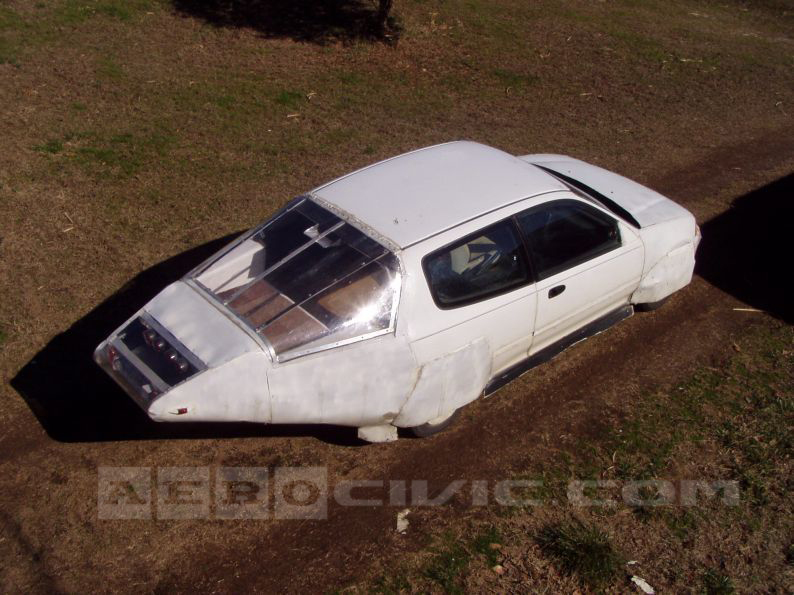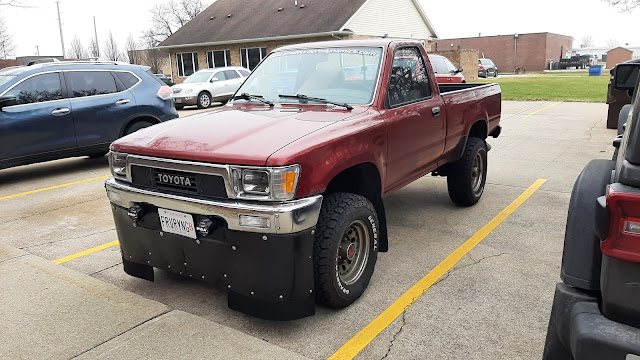Introduction: Part 1
Nearly a decade ago, in the days of the Great Recession gas price shock, I found myself facing a conundrum: I had a very long commute, more than fifty miles each way; I had a reasonably efficient 2005 Honda Civic EX that returned mid-30s MPG; but I was still spending more than I wanted to on fuel. Was it possible, I wondered, to modify my car in such a way that its fuel economy would improve?
 |
| I still have a fondness for 7th-gen Civics, logic be damned. |
I wasn’t the only person asking this, of course. Every time gas prices rise a slew of news outlets and blogs are more than happy to publish articles on getting the best gas mileage out of an existing car. Advice tends to range from the basic but useful (e.g. clean out your car so you aren’t carrying around extra junk all the time) to outright falsities (wash and wax it to reduce aerodynamic drag).
I was interested in something more. I didn’t keep unnecessary items in my car, I kept close to the speed limit, I grouped errands together so I wasn’t making trips with a lot of cold starts. What else could I try? I started searching the internet to answer my question. Those searches led me to a website called Ecomodder.
You may be familiar with Ecomodder. It was started in 2007, around the same time as Wayne Gerdes’ CleanMPG and with the same purpose: to bring together people interested in improving the fuel efficiency of their cars. But where CleanMPG’s focus tended to be on newer cars, hybrids and, eventually, plug-ins, Ecomodder was a bit more down-to-earth. The site’s owners and moderators didn’t review new cars; most of the members owned and drove older vehicles; and Ecomodder was much more focused on modification of the cars themselves in addition to changes in driving style to improve efficiency.
That
seemed like exactly the sort of information I had been seeking. I made an
account, logged on and started reading.
Ecomodder turned out to be a treasure trove of projects. In those days the site saw a lot of traffic, and many members weren’t hesitant with their builds. There were people removing mirror housings, sticking pizza pans to their wheels, and building large chicken-wire-and-foam tails on sedans. The most famous car on the site, the AeroCivic, appeared around this time. The atmosphere was one of wildly extravagant homebuilt engineering, heavy on can-do attitude but unfortunately light on actual testing and measurement of the effects of modifications. The thinking across the site’s members appeared to be, follow some simple practices and you will reduce the drag of a car in all cases. These guidelines distilled into basic rules-of-thumb: fit an air dam to the front bumper but terminate the lower edge no lower than the lowest-hanging component under the car. Fit a rear diffuser within a certain narrow range of angles but remember it won’t work without a fully smoothed pan in front of it all the way to the front edge of the car. Build out a streamlined tail based on the Aerodynamic Streamlining Template, a simple half-body of revolution with a smooth taper that, over the last decade, has achieved a cult-like following on the site as the answer to every problem of reducing drag, no matter the car type or shape.
Cars like the AeroCivic exemplified the application of these rules—to the point that its owner’s username became a verb, i.e. to “basjoos” one’s car. The AeroCivic in particular was reported on in publications such as Wired, which repeated the owner’s claims of 100 MPG at 65 MPH and CD = 0.17 without verification. (AeroCivic’s actual MPG is much lower, as seen in the fuel logs on Ecomodder covering several years of driving, and its CD has only been calculated from coast down tests, a notoriously unreliable method for estimating drag coefficients).
 |
| The legendary Aerocivic. (image credit: aerocivic.com) |
A strange thing had happened at Ecomodder, although I did not know it at the time. The incredibly complex and mostly empirical subject of ground vehicle aerodynamics was viewed as something simple and easy, a field of science and engineering where simplified theory always worked in practical application. Follow these rules and you will get these results on any car, the thinking went. Forum members had built up a repository of conventional wisdom surrounding the practice if not the study of aerodynamics.
So, I wondered, why couldn’t manufacturers build really low-drag cars if it was so simple? And I wasn’t the only person asking this. Many, many contributors to the forum wondered the same thing.
Well, it turns out “conventional wisdom” is very often wrong. The internet is full of well-meaning people who don’t actually know much about complex, non-intuitive subjects such as aerodynamics, as well as a few blowhards who think they know a lot about it and don’t. Building low-drag cars that look good, have low lift, are cost-effective and manufacturable and—perhaps most importantly—will sell is really, really difficult.
But, like
most home experimenters, I was overconfident in my (severely limited)
knowledge—newly bestowed by the other members of Ecomodder—and certain I could
do better. I set about modifying my car according to internet consensus.



Comments
Post a Comment